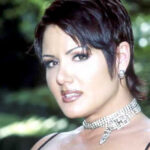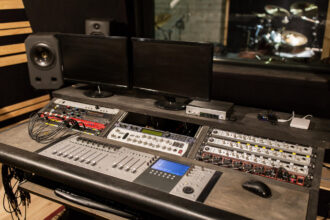Keyboard controllers have critical applications that make them ideal for today’s producers and musicians. Besides creating music on the go, they also have software configurations that enable seamless integration with Digital Audio Workstations (DAWs).
However, keyboard controllers have complex functionalities and configurations that can be challenging for new or experienced musicians to understand. The market also has numerous keyboard controller types, with more emerging daily that they can be hard to track.
This post breaks down the keyboard controller types, key actions, features, and software to help you understand them better.
Why You Need a Keyboard Controller
A keyboard controller is essential to musicians, producers, and composers. It helps them adapt to the changing musical requirements such as traveling. Here are ways one can utilize a keyboard controller to enhance sound output.
- Control over virtual instruments – A keyboard controller will let you play almost any virtual instrument or sound synthesizer on your computer.
- Parameter control – Sliders, knobs, and buttons on your keyboard controller offer more fine-tuning control over the different features in the music production software.
- Expressive playing – Keyboard controllers have velocity-sensitive keys that express emotions clearly.
- DAW integration – The software from keyboard manufacturers comes with a range of DAW simultaneously built-in features, which allows multiple control of the parameters easily.
Features of a Keyboard Controller
Unlike traditional devices like pianos, keyboard controllers can have features that enable them to accomplish functions beyond ordinary sound devices. These are the main characteristics of modern keyboard interfaces and their uses.
1. Number of Keys

Keys in controllers have different fields of numbers that can generate various tunes and sounds through a computer or external device. The popular keyboards possess 25, 49, and 61 keys with several built-in handy capabilities for music inclinations.
Equally, full-sized keyboards have 88 piano keys compared to regular pianos. They produce such melodic music so players can even hum while playing and produce various music genres to experiment with.
2. Key Types and Actions
Key actions are different. Some produce unique melodies in sync with the controller’s intricate sounds, while others make tunes tailored to the player’s feelings. Here are the key types and the actions they produce.
Semi-weighted Keys
These keys have a light spring action. The lower keys are heavier and need extra pressure to press, whereas the higher keyboard keys are lighter. Most semi-weighted keyboards play complicated tunes and different instrumental sounds.
Weighted Keys
These switches are generally light. They slip into the hole when pressed and generate some resistance before coming back up. This feature helps them create a feel and sound similar to a traditional piano, allowing players to tap into their full creative potential and the possibilities a keyboard controller affords.
Synth-action Keys
Synth-action keyboards use a spring-loaded mechanism to spring back the keys into their original positions after pressing. Their quick bounce back lets users play diverse musical electronic sounds and fast tones.
3. Essential Controls
Keyboard controllers have top controls, including electronic drum pads, knobs, faders, and buttons that provide a keyboard with extra functions. They also enable easy integration into digital audio workstations for better alteration of sound parameters and triggering samples.
These are the different controls and their functions.
Drum Pads
The new generation of keyboard controllers features velocity sensitivity pads that allow the user to control the high and low volume of a drum stroke through a swift or forceful touch. It produces beats like a real drum, but it substitutes noise for melody with varying alternatives used by different individuals.
Faders
Faders produce different sound levels, melodies, and pitches. They change or blend sounds to generate new tunes and sound parameters that players can use to express themselves and their craft.
Knobs
Knobs allow users to shape and module sounds on a keyboard controller. They trigger musical elements such as sound filter, resonance, cutoff, and effects to enable the production of clear and smooth music.
Control Buttons
These keys allow players to search to perform other critical functions without pressing the keyboard keys or mouse buttons. They work as a gate to switch off and on the streaming and sampling functions.
4. Software Integration
Contemporary controllers have built-in software that syncs on main DAW suites like Ableton Live, Logic Pro, and FL Studio. The application package also comes with different music tools like effects and virtual studio environments that provide all the needed resources for music creation.
5. Connectivity Tools
Keyboard controllers can connect to any other piece of hardware or software through the connectivity features. The following are the core connection capabilities.
- USB – A USB port is usually available to connect the keyboard directly to a laptop, providing the MIDI connections and the power supply.
- MIDI – Many modern controllers nowadays have MIDI inputs for passing on or receiving messages to/from external devices such as synthesizers and sound modules
- Audio outputs – Controllers have sound output interfaces that connect them to earphones or speakers.
- Bluetooth – Keyboard controllers can connect to remote instruments via Bluetooth without cables.
To Conclude
Keyboards are essential music production devices that enable musicians and producers to produce ideal sounds. Besides generating music, their various features and elements simplify the workflow and fuel creativity. The most essential characteristics of a keyboard controller include key numbers, key actions, connection, and software tools.
Knowing the various keyboard components on modern or conventional keyboard hardware and their features helps you select the most suitable one for your needs. As a result, you can produce even better music than ever with little effort.














